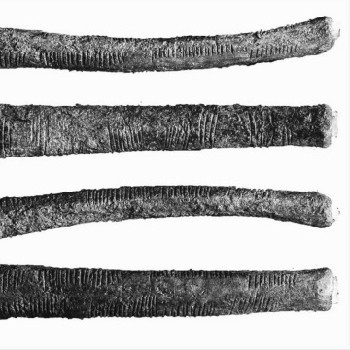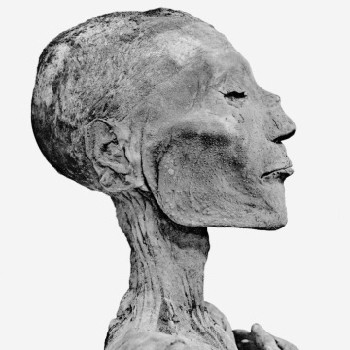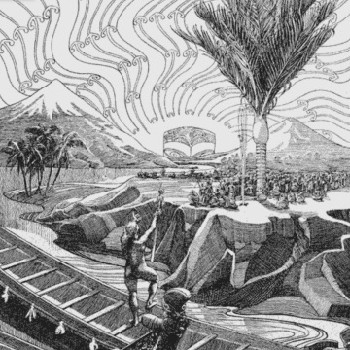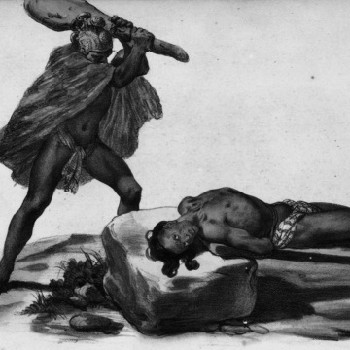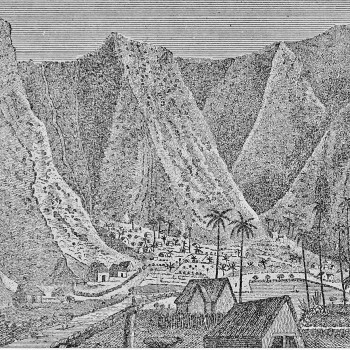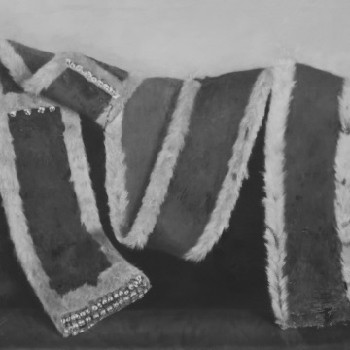[Click to View YouTube Video]
given the venue, i should include a disclaimer that while there is a meagre bit of “jungle alpinism” contained within, if you’re hoping to find directions to actual bouldering or sport climbing on the big island of hawai'i, then you should turn around now. while i’ve explored a good chunk of the island, the only “real” climbing that i’m aware of, as possibly being worth messing around on, is some deep water soloing down at the south point.
finally: in case it’s useful to set a mood, here is part of the soundtrack that was playing for a good chunk of the time while i wrote this:
[Click to View YouTube Video]
The Kohala Ditch Trail: 36ish hrs on foot... to and from the headwaters. [1 of 5]
aka A Case For A North American Allamensrätten: a right to roam and/or
aka Lovin’ the Wild Things: past and present… theirs and ours… lost and found.
[because when your trip report gets this big… you get, not just one, but rather three titles... ha!]
this is the first of a five part telling of what turned into an attempt to follow a mostly abandoned and sometimes destroyed kohala ditch trail back to its source. the k.d.t. was a service trail carved into the sides of the valleys that subdivide kohala mountain’s north side. the trail was built in order to facilitate the construction of a 22 mile long water delivery system, called the kohala ditch. the entire project, including the ditch and its service trail, was built between 1905 and 1907 and near to the hāmākua coast on the north shore of the big island of hawai'i. on the other hand, this semi-spontaneous quest, that resulted in experiences that i’ll be forever grateful to be able to carry inside of me, occurred mostly on june 16 + 17 of 2018.
in order to give a bit of background to some of the human and non-human actors that birthed this adventure, i will be telling this tale in two parallel tracks of chronologically ordered vignettes: one historical and one my own. as such, the bulk of both sets of stories take place within the hāmākua coast's seven major valleys. as they are effectively the main characters to this tale, it is important to note that starting from the west they are named the Pololū, Honokāne Nui, Honokāne Iki, Honokeʻā, Honopuʻe, Waimanu, and Waipiʻo valleys.
at the end i will include some nuts and bolts that will give a more objective summary of the ground covered.
ready or not… here we go…
A. Kohala Mountain: Magnetic Polarity Reversal
[~ 780 000 before present (bp)]
“The Big Island of Hawaii [is composed of] five volcanoes. [They] are Kilauea, Mauna Loa, Mauna Kea, Hualalai and Kohala. Three of them, Hualalai, Mauna Loa and Kilauea are still active as they have erupted in the last 200 years. Kohala is one million years old [and therefore] the oldest volcano in Hawaii. However, it is currently inactive as it stopped erupting 120, 000 years ago.”
dhrititimelineofplatetectonics.weebly.com
“The volcano is so old that it experienced, and recorded, a reversal of magnetic polarity (a change in the orientation of Earth's magnetic field so that the positions of the North and South poles interchange) that happened 780,000 years ago. Fifty flow units in the top 140 m (460 ft) of exposed strata in the Pololu section are of normal polarity, indicating that they were deposited within the last 780,000 years.”
wikipedia.org
a failed business short of a country song… : waimea, hi
[06:15 : 10.06.2018]
this was the text i received from my sister on the morning of june 6:
it was only roughly a half dozen years ago that when a friend told me how sad they were because their dog had died that i had to do my best to be empathetic… i just couldn’t relate and so despite an intellectually driven attempt to be understanding, i was left silencing internalized thoughts like “i get it’s sad, but it’s not like it was a human or something”.
i no longer have that issue and so can no longer imagine thinking those thoughts.
that’s because, in the mean time, the first pets i’d ever had that weren’t just farm styled semi-wild cats and dogs, were two little kittens that i had brought into my apartment a little under a year before i received the text above.
they came into my life at a time when i was finally gaining a small semblance of financial security… while at the same time i was self-employed and getting used to living a single life where there was no one to come home to [after 20ish years of experiencing the opposite].
and so it was that those two little fUckers helped immensely to separate my work life from my home life. nothing like a couple little fuzzy creatures to take your mind off your workday and remind you that you are now in a space and time where you need to do your best to at least attempt to let go of the outside world for a bit.
so when i found out, only two days into a twice previously canceled holiday to the big island of hawai'i, that my cats had made a break from the home where i had left them, my heart felt like it was going to break…
or at least, if it hadn’t felt so chronically exhausted, it likely would have felt like it was going to acutely break.
it had only been a week before that my car had been broken into; a couple months before that, that i had found out from my previous partner that she was pregnant with a new babe; and i was still having dreams where i was screaming at clients after admittedly successfully completed projects but that also resulted in an emotional exhaustion that i had in part brought onto, and so for the most part had held inside of, myself...
and as the final icing du jour, not too long before i had taken the trip, the friend that i had suddenly and surprisingly fallen for... had not reciprocated my interest.
in other words, while nowhere near to the levels of suffering told about in tanakh’s book of job…
still, it was closing in on the level of loss found in your garden variety country song.
B. 150” of Rain Per Yr: Formation of the Hāmākua coast and its seven prominent valleys
[~120 000 bp to present]
“The natural habitats in Kohala range across a wide rainfall gradient in a very short distance - from less than 5 inches (130 mm) a year on the coast near Kawaihae to more than 150 inches (3,800 mm) year near the summit of Kohala Mountain, a distance of just 11 miles (18 km). Near the coast are remnants of dry forests, and near the summit is a cloud forest, a type of rainforest that obtains some of its moisture from "cloud drip" in addition to precipitation.”
wikipedia.org
“Perhaps the most widely cited terrestrial analogs for Martian amphitheater-headed valleys in basalt are the spectacular canyons of Kohala, Hawai‘i... We found no evidence for intensively weathered rocks or alcoves around springs at valley headwalls. Instead, valley-head erosion appears to be dominated by waterfall plunge pools. Stream flow from peak annual precipitation events exceeds spring discharge by more than an order of magnitude, and such flow is responsible for evacuation of the coarse sediment that lines the streams.”
pdfs.semanticscholar.org
lovin’ the wild things…: waimea, hi:
[20:27 : 10.06.2018]
one of my texts back later in the the same day:
my sister, who i had left the cats with, was doing everything in her power to get the cats back... but so far nothing. and so i was starting to come to terms with the possibility that, in the coyote frequented area of the city that my sister was living in, there was a good chance that "my" cats wouldn’t be coming back.
and so i was reminded and comforted by the fact that those cats, especially the black cat mookie, had always had a wild streak. because the elaboration on the text above was that the little bugger almost sprained my wrist on the day i was referring to. she did this when, after seeing no apparent escape from the communal hallway, [that was outside of the apartment that i live in and she had bolted from] she decided to charge at full teenagerish cat speed directly at me.
as i grabbed her and took her back inside the apartment, i never would have guessed that a less than ten pound cat could hit that hard.
C. Tally Sticks, Smallpox and Sugarcane: with apologies to Jared Diamond
[~10000-3000 (or maybe 400) bp or 330 - 90 (or maybe 13) generations ago*]
First Known Tally Sticks:
“Regarding money of account, the tally stick can reasonably be described as a very primitive ledger – the oldest of which dates to the Aurignacian, about 30,000 years ago. While it may not be reasonable to conclude the most ancient tally sticks were used to keep accounting records in the monetary system sense of the term, their existence does show that "accounting" – keeping a written record of things counted – is far more ancient than many people assume. The 20,000-year-old Ishango Bone - found near one of the sources of the Nile in the Democratic Republic of Congo - seems to use matched tally marks on the thigh bone of a baboon for correspondence counting, [though it has also been suggested that the scratches might have been to create a better grip on the handle or for some other non-mathematical reason]”
en.wikipedia.org
solarey.net
First Known Cases of Smallpox... or Not:
"The history of smallpox extends into pre-history, the disease likely emerged in human populations about 10,000 BC. The earliest credible evidence of smallpox is found in the Egyptian mummies of people who died some 3000 years ago."
generousgeorgian.files.wordpress.com
“But the researchers' analysis of the virus, called the variola virus, suggests that smallpox first appeared in humans much more recently than thought... The researchers drew their conclusion by taking virus from the mummy of the child, who lived between 1643 and 1665, and comparing that strain against variola viruses that date to the mid-1900s. The differences, or mutations, that the researchers found suggest that the strains shared a common ancestor that first arose between 1588 and 1645. That time period was filled with human exploration, migration and colonization — activities that could have spread the virus worldwide, the researchers noted.”
“More studies are needed to confirm that the smallpox virus indeed arose that recently, but if it did, this would cast doubt on the previously suggested idea that people in ancient Egypt had smallpox. Although 3,000- to 4,000-year-old Egyptian mummies have pockmark scarring, a symptom of smallpox, these scars could have also come from measles or chickenpox, said the study's first author, Ana Duggan..."
livescience.com
First Known Domestication of Sugar Cane:
"Saccharum officinarum was first domesticated in New Guinea and the islands east of the Wallace Line by Papuans, where it is the modern center of diversity. Beginning at around 6,000 BP they were selectively bred from the native Saccharum robustum. From New Guinea it spread westwards to Island Southeast Asia after contact with Austronesians, where it hybridized with Saccharum spontaneum."
en.wikipedia.org
*isogg.org
a volcano displacement resulting sidebar: at the pololū valley lookout
[07:00ish : 16.06.2018 : km 0 : 0m gained]
[Click to View YouTube Video]
[Click to View YouTube Video]
as i arrived before dawn at the pullout at the top of the pololū lookout, there was one other vehicle already there. as i began to collect my things a dude got out of his truck and proceeded to get my attention. it was obvious he was living in the topperless truck and that was confirmed as he told of how he had had to abandon his house on the south side of the island as the kilauea volcano decided to open up and temporarily reclaim many areas that had become much loved by humans.
even though there was now light, i couldn’t help but listen to his story and so about an hour after i had intended i took off down the well tended trail to the pololū valley and its black sand beaches.
D. Hawaiki, Kapu + Lapa'au: the mythical original home of the Polynesians, Tahitian systems of organization + the birth of the use of medicinal herbs
[~124-1120 c.e. or 55-34 generations ago]
Hawaiki:
“Many historians believe that the Polynesians who settled Hawaii came from the Marquesas Islands, which had forbidding terrain and poor conditions for farming. To aid their venture's success, they brought many types of supplies. In addition to food for the journey, they brought at least a half dozen plant species to cultivate, like [sugarcane], bananas, taro, and breadfruit. They also brought pigs, small dogs, and chickens to raise.”
“Polynesians first landed on the big island of Hawaii, at Ka Lae [aka South Point] on the southern coast. The name Hawaii derives from the word Havaiki, the Polynesian name for a homeland they believed they all originally came from and would return to after death… Over the years, they spread out over all the major Hawaiian islands. With no written documents and few artifacts to study, little is known about their customs and ways of life.”
hawaii-guide.info
futurity.org
Kapu:
"At the turn of the millennium, around A.D. 1000, a second wave of settlers came to the Hawaiian Islands from Tahiti by way of large, double-hulled canoes. The Tahitians called the original settlers the Menehune, a name that is still used to identify the first wave of settlers from the Marquesas. The Menehune were widely oppressed by the Tahitians, which led to the original settlers seeking refuge in the mountains. For about 200 years, the Tahitians ran the exploration and trade routes that ran back and forth between Tahiti and the Hawaiian Islands."
waimea.com
"The social system that held the Hawaiian peoples together from the time of the Tahitian migration until after the arrival of Europeans was known as the Kapu system. The laws of Kapu can be split into three basic categories based on their origins: ones derived from the basic tenets of the Kahuna religion, ones associated with maintaining the social caste system, and those used by chiefs and other officials to maintain order. The first group of laws included rules that forbade men and women from eating together and prevented women from eating certain types of foods, such as bananas for example. The second category included the rules that men and women had to follow when in the presence of members of a higher class than themselves. For example, lower class Hawaiians could not touch the shadow of an Ali’i, which would avoid them stealing his ‘mana’. The final group of rules were the political and legislative decisions made by the chief, which were the ancient Hawaiians laws. Any violations of Kapu, even accidental ones, were punishable by death."
en.wikibooks.org
Lapa'au:
"One of the early native traditions which references the Kohala-Hāmākua mountain lands is set in distant antiquity, in a time when gods took human form and walked with mankind. In 1837 S.P. Kalama and G. P. Judd collected native traditions documenting the use of lapaʻau (medicinal herbs) for healing, and how the knowledge was first gained by the Hawaiians. An article series published in the Hawaiian newspaper, Ka Hae Hawaii in 1858, presented some of that information to readers of the paper. The narrative is of great interest because it describes several island localities and the founding of Hawaiian medicinal practices and rituals."
"The account also alludes to the migrations of the god-form of the kōlea (golden plover), in connection with events in the account. A place on the boundary of Puʻukapu and Waipiʻo-Lālākea bears the name Kaʻa-kōlea, and was a place of sacrifice in ancient times. The moʻolelo also tells readers that it was at ʻĀwini (neighboring the Kohala mountain lands), that the arts of lapaʻau were taught, and from there, the practices spread throughout the islands."
www.ulukau.org
lucid not dreaming: honokāne nui valley bottom
[07:45ish : 16.06.2018 : km 2.8ish : ~250m gained]
[Click to View YouTube Video]
[Click to View YouTube Video]
while not near to the toughest part of the trail, dropping into honokāne nui is one of the more interesting parts from a climber's perspective. locals have rigged up a series of ropes to assist a person in their descending, as this portion of the original kohala ditch trail was effectively destroyed by landslides after the 2006 earthquake.
i first started to explore this trail two years ago. but that time around had been during a period with some heavy rains, and so when i worked my way across this second valley, i had needed to do a sketchy pole assisted thigh high deep and fast flowing water crossing of the honokāne nui stream… so i was pleasantly surprised to see that this year it was but a trickle.
every time i have passed through the bamboo grove at the bottom of this valley i feel like i am experiencing some kind of mildly transcendental experience as the sunlight filters down through the tall stalks and the birds chirp in the otherwise near silence… maybe someday gopro will manufacture an experience capturer complete with synthetic chemical delivery port to the base of the brain… until then some shitty visuals that captured about 0% of the transcendental portion will have to suffice…
E. Kaha’imoele’a + Liloa: the sixth + twelfth Hawaiian kings who were also the first + then most storied of the kings who used Waipi’o valley as a royal residence
[1285-1315 and 1455-1485 c.e. or 22-16 generations ago]
Kaha’imoele’a:
"Waipi’o Valley played a large role in Hawaiian history for about 270 years, beginning as early as the twelfth century when it was the residence of nine successive high chiefs o th Pili Ka’aiea line of Hwai’i’ Island, until after the death of Liloa when his son”Umi moved his residence form Waipi’o Valley to Kalua-Kona on the leeward side of Hawai’i Island. Waipi’o Valley continued to be important as the residence of many ruling high ali’i chiefs until the time of Kamehameha the First [the late 1700s]... Kama’i’ole’s [the fifth king] rules [were] oppressive and he was assassinated with help from Pa’ao who installed Kaha’imoele’a… who built up Ka Haunokama’ahala, the royal residence of Waipi’o Valley."
Waipi'o Valley: A Polynesian Journey from Eden to Eden
royalark.net
Liloa:
"Līloa was a legendary ruler of the island of Hawaii in the late 15th century. His royal compound was in Waipiʻo Valley. His line is traced to Hawaiian "creation". Līloa had two sons; his firstborn Hākau from his wife Pinea, (his mother's sister), and his second son, ʻUmi a Līloa from his lesser ranking wife, Akahi a Kuleana. Akahi a Kuleana was of a lesser line of chiefs who Liloa had fallen in love with when he discovered her bathing in a river. The couple met when Liloa was visiting Hamakua. He claimed his right to her as King and she accepted. [author's note: hmmmm.] Liloa's Kāʻei is his sacred feathered sash, now kept at the Bishop Museum. In his book, David Malo described how Liloa originated the practice of moe āikane, the sexual relationship between males. The relationships had no social stigma and were accepted practice beginning with the aliʻi and then copied by the other classes. Warriors engaged in the practice. The relationships cannot be defined as bisexuality.
en.wikipedia.org
lose... find... lose... find... : exiting from honokāne iki
[09:00ish : 16.06.2018 : km 6.5ish : ~700m gained]
[Click to View YouTube Video]
[Click to View YouTube Video]
at the bottom of the honokāne iki valley is a surprising cabin on a parcel of land that i later found out is and was owned by the sproat family. their patriarch bill, acted for close to half a century, as a caretaker for the kohala ditch and its trail.
when storms are rolling in, this bay and its amplification of the incoming waves, is a sight to behold… on this day it was relatively calm.
while i've now done the portion of the trail to the east of honokāne iki four times now, every time has been via a different way... it was only the last time back in, about 24 hours after these clips, that i was actually able to follow the trail the entire way.
this time it was: lose the trail... find the trail... lose the trail... find the trail... and repeat.
part two is now posted here and part three is now here.
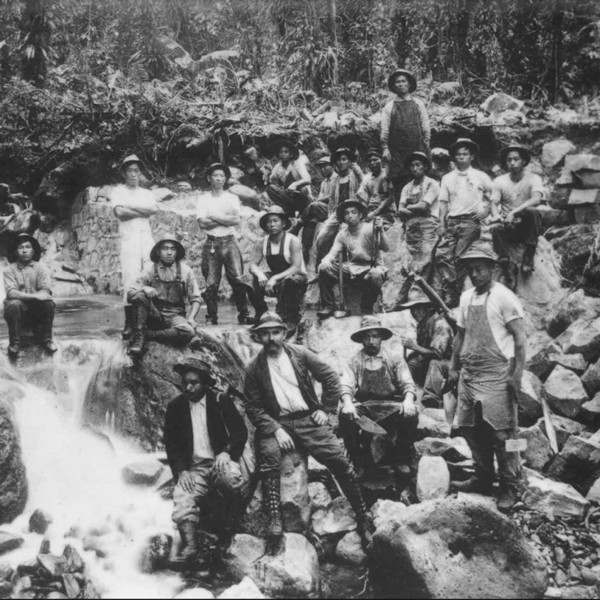
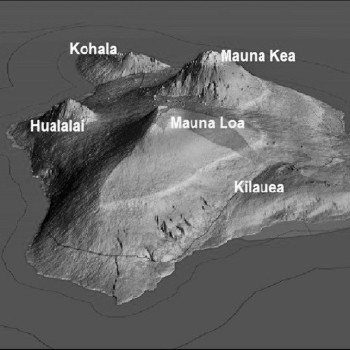
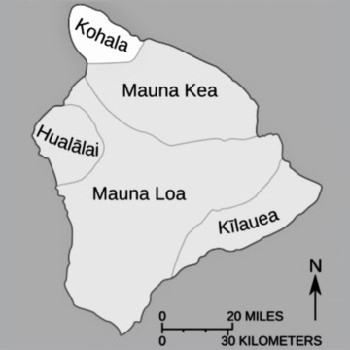
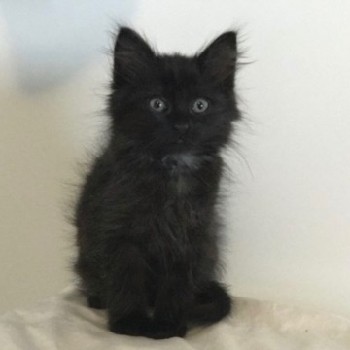
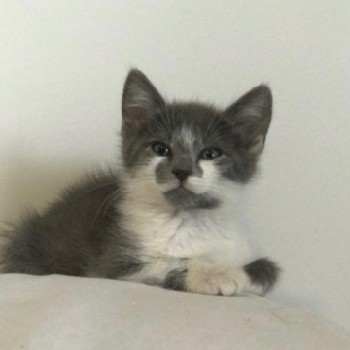

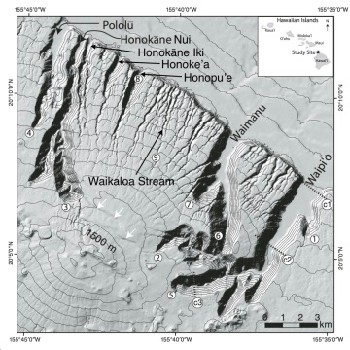
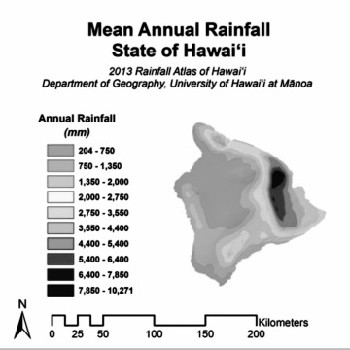
![[semi-] wild thing number one](http://www.supertopo.com/photos/43/27/554192_25045_L.jpg)
![[semi-] wild thing number two](http://www.supertopo.com/photos/43/27/554193_18624_L.jpg)

